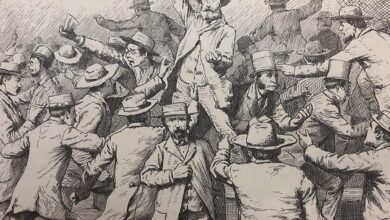Book Excerpt: Trailblazers, Heroes, and Crooks

Editor’s Note: The following is an adapted excerpt from Stephen R. Foerster’s book Trailblazers, Heroes, and Crooks: Stories to Make You a Smarter Investor (Wiley 2024).
Autopilots Gone Wrong
Aeroflot 593 set off on March 22, 1994, for a 14-hour flight from Moscow to Hong Kong with 75 people on board. Thirty-nine minutes after its take-off, it reached its cruising altitude. The plane was flying on autopilot, and everything was going according to plan. The pilot in command (PIC), Viktorovich Danilov, was in the passenger cabin, resting. Back-up PIC, Yaroslav Vladimirovich Kudrinsky, was sitting in the left seat. Co-pilot Igor Vladimirovich Piskarev was in the right seat. All pilots were highly experienced.
Take Your Kids to Work
Kudrinsky’s two children were on the flight: 12-year-old daughter Yana and 16-year-old son Eldar. Another pilot, Vladimir Makarov, who was flying as a passenger, took them to the cockpit. Kudrinsky invited Yana to sit in the left seat where he had been sitting and to “fly the airplane a bit… Go ahead, take the controls.” Kudrinsky then set the autopilot to make a slight turning maneuver. The plane gently turned left, then right, back to the original heading. This gave Yana the impression she was causing the plane to turn.
Then Eldar took the seat. Kudrinsky again set the autopilot. Eldar asked his father if he could turn the control wheel. Kudrinsky said “yes.” But Eldar applied more force than his sister, turning the control wheel so that the plane would turn at a 15-degree angle, while the autopilot was trying to hold it at 5 degrees.
Autopilot Override
Autopilot functions were invented in 1912 by American Lawrence Sperry. Sperry attached a gyroscopic heading indicator to a rudder to balance the plane. On June 18, 1914, Sperry showcased his invention at the Airplane Safety Competition in Paris. While flying past the judge’s stand, Sperry engaged the stabilizer device. He then raised his arms over his head while letting the autopilot balance the plane. On the next lap his engineer climbed onto the wing of the plane to demonstrate the autopilot’s balancing ability. On the final lap, both stood on the wings, waving to the crowd. Sperry was awarded first prize.
Back to Aeroflot flight 593, inadvertently Eldar overrode the autopilot function that controlled the angling of the plane. Eldar continued turning his control wheel to the right. But now with the autopilot disengaged, the right bank began to gradually increase and passed the operating limit of 45 degrees.
“Why Is It Turning?”
Eldar noticed something wasn’t right. “Why is it turning?” The plane was now turning at a 50-degree angle. It began to descend and started to vibrate. The g-force was drastically increasing, making it difficult for Kudrinsky to get into the seat where his son was. Piskarev began attempting to counter the roll, but it was too late. The plane was losing altitude, and the aircraft began to stall.
Warnings Then “Everything’s Fine”
Warnings were sounding. With the plane now in a dive at 460 mph, and with the increased g-force, the pilots were disoriented. Then Piskarev was able to reestablish lateral orientation and shouted to Eldar: “To the left! There’s the ground!” The g-force was now exceeding the structural limits of the plane. Kudrinsky was trying to get into the left seat, yelling at Eldar: “Get out!”
Piskarev recognized the current primary danger of the high speed and exclaimed: “Throttle to idle!” Piskarev was able to pull out of the dive, but he over-corrected. The plane started rolling uncontrollably. Piskarev yelled out: “Full power!” A second later, Kudrinsky finally regained his seat.
Kudrinsky and Piskarev were desperately trying to regain control of the plane. The plane’s rotation had slowed. Kudrinsky was alternating the rudder pedals trying to stop the rotation and succeeded, but the speed had again increased, to 230 mph, and the altitude was only 1,000 feet. Kudrinsky exclaimed: “We’ll get out of this. Everything’s fine…Pull up gently!” But everything wasn’t fine. The plane crashed into a mountain in Siberia. All 75 on board were killed.
Autopilots for Investors
We rely on autopilots in investing. Often, we don’t understand how they work and their limitations. Automation has made investing more efficient. Index funds have drastically reduced fees. But not all index funds are equal. For example, with a Canadian index fund, you’re getting major sector concentration. Target date (life cycle) funds, with stocks and bonds that reallocate through time, are autopilots. As investors age, their exposure to riskier equities decreases and the exposure to less risky bonds increases. Yet more than age impacts an investor’s risk tolerance. Stop-loss orders, another autopilot, are designed to limit losses. But in volatile markets, there is no guarantee that you could sell at the stock-loss price.
Yet we override autopilots at our peril. Despite all the attempts by Kudrinsky and Piskarev to save the plane, had they just let go of the control wheel, the autopilot would have prevented the crash. Buying and holding an index fund takes our emotions out of play and helps us to avoid mistakes. Studies have shown that investors — particularly men — are overconfident in their trading abilities and trade excessively. But this hurts performance, and they would have been better off buying and holding an index fund.
A final lesson from aviation: When disaster strikes, we need to recover the black box, understand what went wrong, and learn from our mistakes. Even Warren Buffett makes mistakes such as by investing in airline stocks. He once quipped, “If a far-sighted capitalist had been present at Kitty Hawk, he would have done his successors a huge favor by shooting Orville down.” At least Buffett admits and learns from mistakes.





